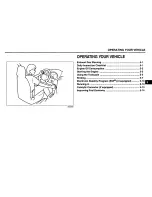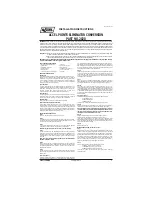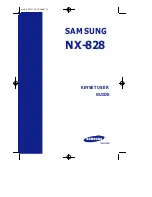
MIO-R290GM2011 Rev E
G&B Specialties Inc. 535 West 3
rd
Street, Berwick, PA, USA Tel: (570) 752-5901 Fax: (570) 752-6397
US Field Service: 570-441-6988; CAN Field Service 570-854-0482; www.rafna.com
-105-
Adjust each rail wheel load as follows:
There are two rubber springs on the railgear located between the railgear lower cross frame
and each adjustment rod. The adjustment rods are threaded into the railgear axle. The
rubber springs support the load between the lower cross frame and the axle while a ¾”
Nylock nut on top of each guide tube prevents the axle from separating from the lower cross
frame. The load on the rail wheels is adjusted by threading the adjustment rod into or out of
the axle and moving the ¾” Nylock nut to keep the rubber springs compressed at 3.5” while
in the road position. There must be at least two threads passing through the ¾” Nylock nut on
top of the guide tubes. Both adjustment rods on the same railgear should be set at the same
distance from the railgear axle.
1.
Raise the railgear until the rail wheels are off the rails.
2.
Loosen the ¾” jam nuts that secure the adjustment rods to the railgear axle and loosen
the ¾” Nylock nuts on top of the outer guide tubes.
3.
Screw the adjustment rods into the axle to decrease the rail wheel loads or out of the
axle to increase the rail wheel loads.
4.
Lower the railgear to the rail position and re-check the rail wheel loads. Re-adjust the rail
wheel loads if necessary.
5.
The distance between the top of the axle and the bottom of the adjustment rod plates
once adjusted should not exceed 2.5”. If the correct rail wheel load cannot be achieved
within this maximum distance, then railgear mounting shims will have to be added
between the railgear and the railgear mounting brackets. Likewise, if the adjustment rods
are threaded completely into the axle and the rail wheel load is still too high, then
railgear mounting shims will have be removed from between the railgear and the railgear
mounting brackets. The railgear alignment will have to be checked if shims are added or
removed.
6.
Raise the railgear until the rail wheels are off the rails. Tighten the ¾” jam nuts on the
adjustment rods against the axle. Tighten the ¾” Nylock nuts on top of the guide tubes so
that the rubber springs are compressed to 3.5”.
7.
Following the rail wheel load adjustment, the railgear may contact the vehicle if not
enough clearance was left during installation. Check the railgear clearance to all vehicle
components throughout the full range of railgear and railgear suspension movement. If
there is interference with the vehicle bumper or exhaust, it can be trimmed and
reinforced as required. Ensuring any exhaust system modifications conform to applicable
laws and regulations.
















































